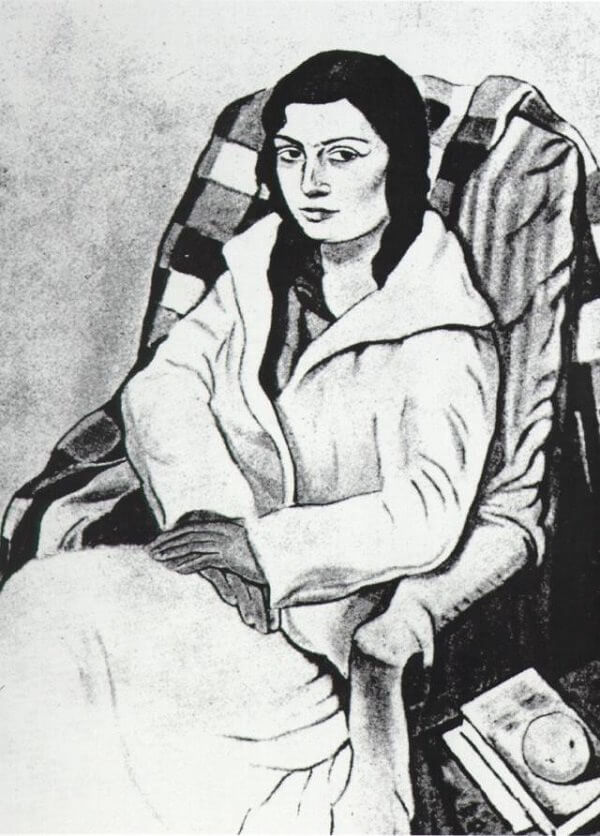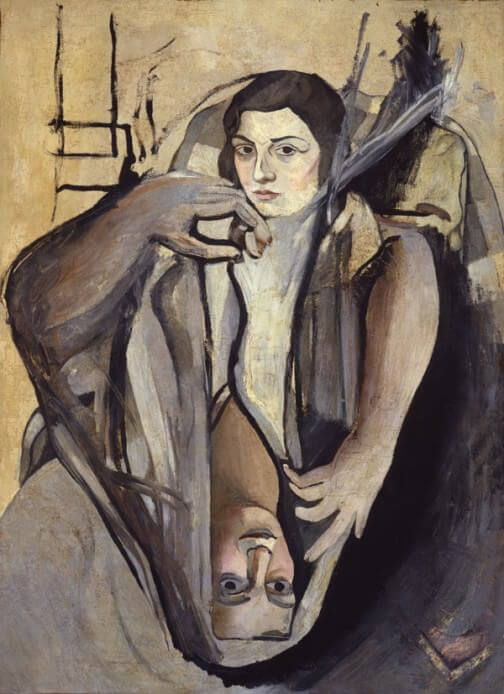Portrait of my Sister, 1923 by Salvador Dali

When first exhibited in Spain, Portrait of My Sister brought the young Dali considerable fame. When first shown, it presented his primary model from the period, his 15-year-old sister Ana Maria, in a realistic style, She was seated in an armchair with her hands crossed in her lap; a small table with books occupies the lower right-hand corner. Later Dali returned to this celebrated portrait and added the second upside-down figure in a style radically different from the first, giving the whole composition the appearance of a playing card.
While the refined first portrait is in Picasso's neo-classical style, the distorted second portrait seems inspired by early Cubist portraits of Picasso. Dali never explained his intentions for the second portrait, but the timing suggests Picasso's powerful influence over the younger artist after their first meeting in 1926.
Another interpretation of the over-painting is that it reveals the tension growing between the artist and his sister Close during their youth, Dali and his sister grew distant once Gala, his future wife, entered his life. The two women disliked each other from the start. When Dali published his creative autobiography The Secret Life of Salvador Dali in 1941, filled with outrageous and shocking stories about his behavior as a boy, Ana Maria felt compelled to challenge his carefully orchestrated stories. In 1950 she published Salvador Dali as Seen by His Sister, presenting his youth in far more ordinary terms. Instead of the monstrous child Dali describes, she presents her brother as simply a spoiled child, and she blames Gala and the Surrealists for encouraging his aberrant fantasies.

Dali was outraged, convinced that her book undermined the credibility of his fantastic tales. He immediately had a set of cards printed denouncing her book, which he distributed to anyone he would meet. It was the final break between the two, and they never spoke to each other again.























